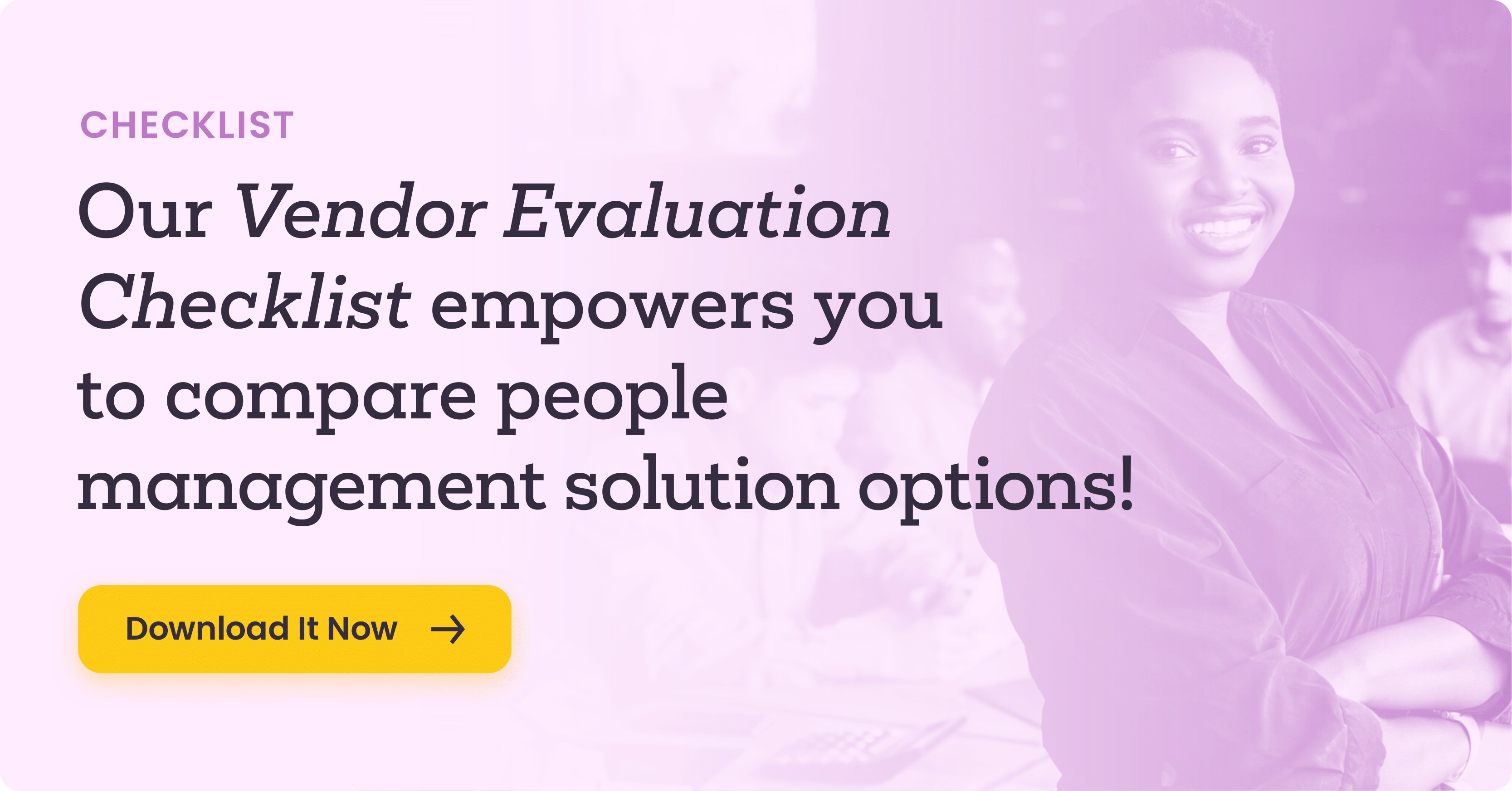How to Avoid Confusion About “Potential,” “Performance,” and Other Terms in the Talent Review Process
 The talent review process is an essential component of the succession planning process. In other words, you need to evaluate talent on your team to identify top performers and those who can help lead the organization to success.
The talent review process is an essential component of the succession planning process. In other words, you need to evaluate talent on your team to identify top performers and those who can help lead the organization to success.
It can be easy to get confused during talent reviews if everyone involved isn’t operating with the same definitions. Managers can often confuse terms such as potential, performance, promotability, and readiness. These are all helpful terms to use in talent review, but each has its own distinct meaning and purpose. It’s important that everyone involved in talent review is on the same page regarding the definitions of these terms and their place in talent review.
The Difference Between Potential and Performance
Potential and performance are both key terms in the talent review process. Companies need a clear company-wide definition of these terms. Understanding the definition of performance and potential can help you accurately assess employees’ current and future success:
- Performance refers to how well an individual executes the responsibilities and demonstrates the behaviors required for their current position. In other words, it answers the question, “To what degree is this employee succeeding in their role?” or “How satisfactory is this employee’s work?”
- Potential refers to a prediction about future performance based on a person’s capabilities and aptitude. In other words, it answers questions such as, “How is this seasoned employee likely to perform in a management-level role?” or “How likely is it that this person will excel in a different role?”
Performance and potential are easy to conflate since they sometimes coincide. An employee who has a great deal of potential may also be performing well in their current role. The reverse can also be true: An employee who is currently not performing well may show great potential.
However, that isn’t always the case. Some employees may excel in their current position without showing a propensity for a different or more advanced role. In fact, research suggests that only 30 percent of high performers are also high-potential employees.
Misunderstanding high performance for high potential can cause significant problems for talent management. For example, you may promote a high performer who lacks the leadership skills needed to succeed in their new management position. These circumstances can contribute to issues of leadership derailment, which can be detrimental to your company’s success.
The assessment of both performance and potential should be a part of the talent review process. Reviewers should consider both terms independently, understanding the distinct purpose of each term, to get a full picture of an employee’s value to the organization.
→ Looking for a vendor who has the expertise and tools to create a custom solution for evaluating both performance and potential? Download our Vendor Evaluation Guide.
How to Effectively Evaluate Employee Potential
How can you properly identify potential to ensure you promote the right individuals in your company? One key strategy is to utilize succession planning software. With a quality talent review tool kit at your disposal, you can systematically assess performance and potential across your organization.
What should you look for as you evaluate employee potential? According to Harvard Business Review, research reveals three general markers of high potential:
- Ability: As we saw earlier in this post, not all high performers have high potential. However, an employee with high potential should be excelling in their current role. Start by assessing an employee’s current abilities before moving on to consider whether they have the aptitude for a more advanced role with greater responsibilities.
- Social skills: Social skills are critical to success in a variety of roles but especially in leadership positions. Social skills involve a person’s ability to manage themselves and to engage in positive relationships with others. An employee who performs well in their current role and who demonstrates an ability to collaborate and communicate well with others likely has high potential to succeed in a managerial role.
- Drive: Another important factor that contributes to potential is an employee’s drive. Consider whether an employee demonstrates a strong work ethic and motivation to continuously learn and strive to do better. Without drive, an employee likely won’t reach their full potential.
Consider what other qualities are critical for success in your organization, particularly for success in more advanced roles. For example, in some companies, the ability to adapt and reskill may be an essential aspect of potential, readiness, and promotability.
The key is to make sure you have a clear strategy in place for assessing employee performance and potential according to the metrics that matter most to the success of your team.
Understanding Promotability and Readiness
Performance and potential aren’t the only terms you need to define and understand for an informed talent review process. You also need clarity around two terms frequently confused with potential: promotability and readiness. Let’s take a closer look at these definitions:
- Promotability refers to an individual having the experience and capabilities to take on a role at the next logical organizational level. This shares some similarities with potential, but it is a more specific term since it considers only an employee’s eligibility to be moved into a more advanced role.
- Readiness refers to the degree to which an individual’s skills, competencies, experiences, knowledge, and motivation meet the requirements for a particular job or group of jobs. An individual with a high level of potential can be more ready for some jobs than others, so it’s helpful to move beyond a general discussion of an employee’s potential to look at their readiness for specific roles or responsibilities.
How to Ensure Clarity
Since it’s easy for confusion to creep in during the talent review process, you need to take proactive steps to ensure you maintain clarity. Follow these tips:
- Define your terms: Provide definitions of all relevant terms to leadership, so all reviewers in your organization are on the same page. This way you can achieve some consistency in the way employees are evaluated across the organization.
- Consider each term separately: Ask talent reviewers to independently consider each employee’s performance and their potential. You can also ask them to evaluate their readiness and promotability. By looking at these qualities individually, it emphasizes to reviewers that each quality is distinct.
- Use a rating scale: Simply asking a manager how well an employee performs or whether they show potential can leave the manager feeling a bit lost. Create a rating scale for performance and potential that can be used to guide discussion and help reviewers determine the final rating.
- Calibrate performance ratings: Another way to ensure consistency in the way supervisors measure employee performance is to undergo performance calibration. Supervisors rate their employees and attend performance calibration meetings where they share their ratings and rationale with other managers and adjust as necessary according to feedback. HR staff can also weigh in with historical and departmental data to put individual ratings into perspective.
Empower Your Performance Review Process with Help from viaPeople
The talent review process can help you identify top performers and determine the best candidates for promotion. Understanding the distinctions between terms such as performance, potential, promotability, and readiness can help managers accurately assess talent in the organization and plan for future success.
The talent review process can be daunting for managers, but having the right guidance and tools can make all the difference. Empower managers to evaluate the review process and find the right tool for your company's unique needs: Download our free Vendor Evaluation Checklist to get started.
Share this
You May Also Like
These Related Stories

Clouding Talent Assessment in the Succession Planning Process

Performance Calibration vs. Talent Calibration: Do You Need Both?


